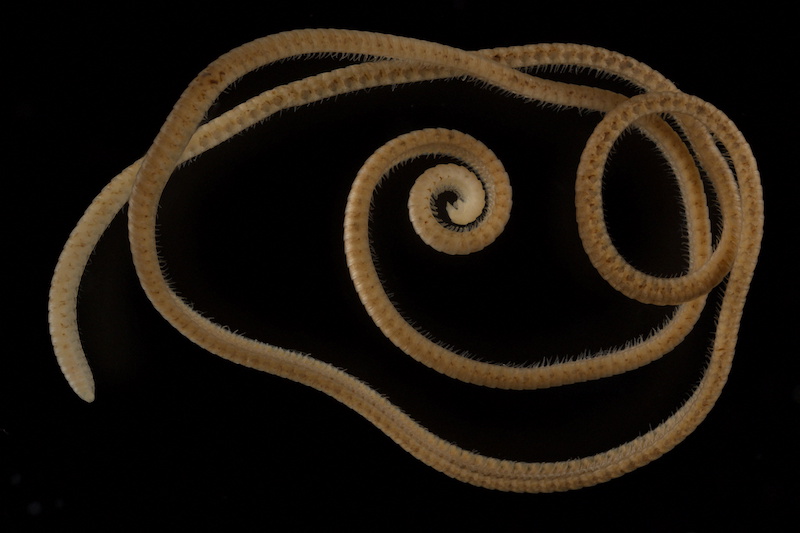PARIS, Dec 17 — Scientists have discovered the world’s first true millipede, a study said Thursday, describing a long, thin and segmented creature with a whopping 1,306 legs — more than any other animal ever.
Worm-like creepy critters with hundreds of legs are commonly known as millipedes, a name that roughly translates to “thousand feet” — but until now none has ever been found with more than 750.
The record-setting species was discovered 60 metres underground in a drill hole in a mining area in Western Australia and has been dubbed Eumillipes persephone.
“The species name is from the Greek mythological goddess of the underworld, Persephone, who was originally from the surface but was taken to the underworld by Hades,” study author Paul Marek of Virginia Tech University told AFP.
The string-like creature is less than a millimetre wide but nearly 10 centimetres long and has “a cone-shaped head with enormous antennae and a beak for feeding”, the study says.
It also has no eyes and is colourless, traits characteristic of animals that spend their entire lives underground.
“The millipede burrows by stretching out its extensible body thereby making it thinner to fit small cracks,” Marek said.
“The many legs propel the body and force open small fissures and crevices.”
Commenting on the findings, insect specialist Andre Nel, who was not involved in the research, described the new critter as remarkable.
“In cavity-dwelling insects you usually find elongated legs, rather than elongated bodies,” he told AFP.
He added that the discovery was a hopeful one for biodiversity, especially in an area that has probably been damaged by mining activity.
“It recolonised artificial cavities, which is pretty encouraging,” Nel said.
He said the so-called micro-cavities are a largely unknown habitat where new species are often discovered.
“There is probably a whole range of animal life to discover in the area,” he said.
Millipedes were some of the earliest air-breathing animals on Earth, the study notes, and some extinct species grew to be over two metres long.
They play a vital role in the ecosystems they inhabit by eating detritus and recycling nutrients.
Baby millipedes hatch with just four legs but can continue to grow new segments with new legs into adulthood. — AFP






















